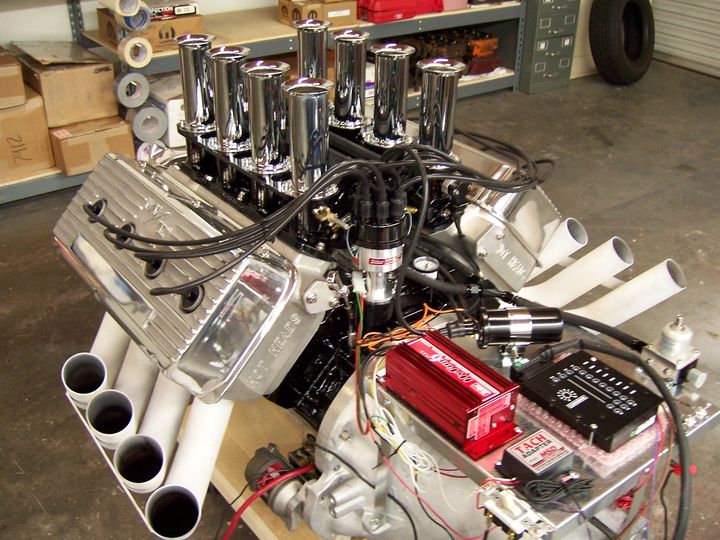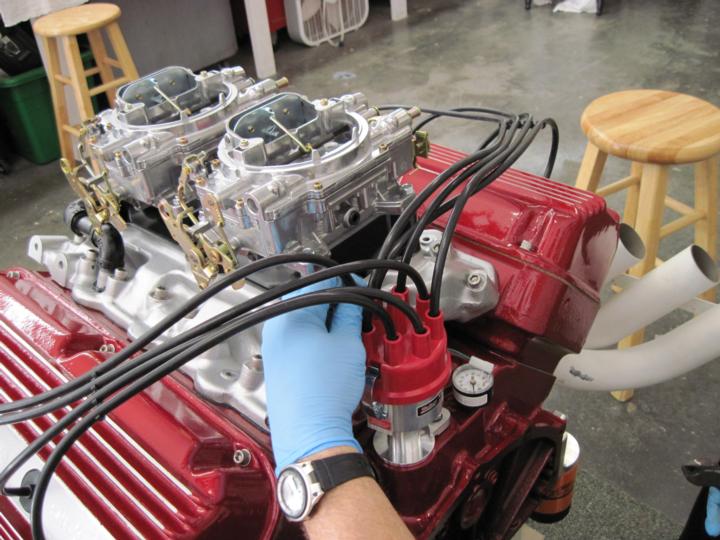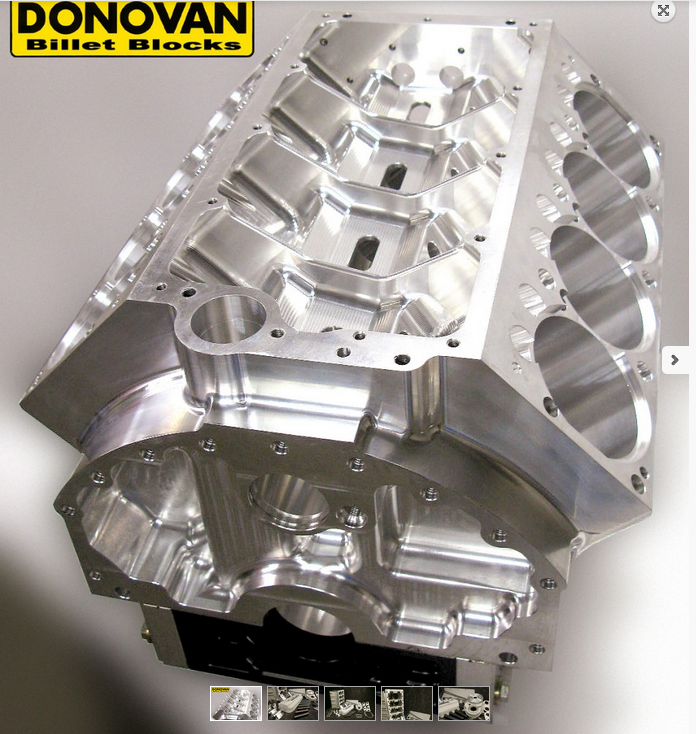if all engine parts cost the same and all engines weighted about the same theres absolutely no question in my mind as to which engines I prefer, its mechanically laid out to be both structurally very strong & rigid and too maximize air flow through the cylinders
these five engines would be my preferred engine families
early hemis 392 & the later series, 426
BBC 427-572
chrysler 440
pontiac 389-455
ford 385 series (429-460-514-557)
http://www.hotrod.com/how-to/engine/150 ... rly-hemis/
http://www.hothemiheads.com/engine_block/gaskets.html
http://garage.grumpysperformance.com/index.php?threads/1953-chrysler-331-hemi.12532/#post-63455
http://www.hothemiheads.com/hemi_info/hemi_engine_id.html
http://victorylibrary.com/mopar/hemi-c.htm
http://www.hothemiheads.com/cam_shafts_timing/camshafts_new.html
https://www.hotrod.com/articles/build-vintage-392-hemi-cheap-get-436-hp/
https://www.hotrod.com/articles/hrdp-1207-guide-to-early-hemi-engines-part-2/
but you obviously need to know what blocks and heads to use in each type of engine and theres some junk available in each group.
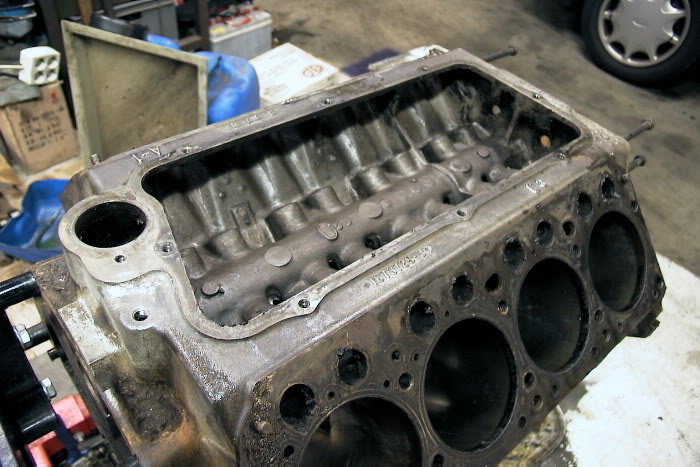

the early hemi 392 was one of my favorite engines its very well designed, these early 392 hemi,s are TOTALLY different engines,from the later 426 hemi most muscle car guys think of when you mention a "HEMI" the fast way to tell the early hemi, is the location of the distributor
early hemi,s had it vertical in the rear of the engine block, and a very distinctive block.
I wish Id saved or not sold off several 392 hemi,s I had when I was younger, but at the time they were very easy to come by from salvage yards, and I also had several 396-427 big block Chevy engines and 389, 400, 421 and 428 Pontiac
be aware THAT many pumps ETC, used industrial EARLY hemi engines of 331-354 displacement
http://www.classichemi.com/index1.shtml


later versions of the 354 and 392 had a removable bell housing design, making them much better suited as car engines
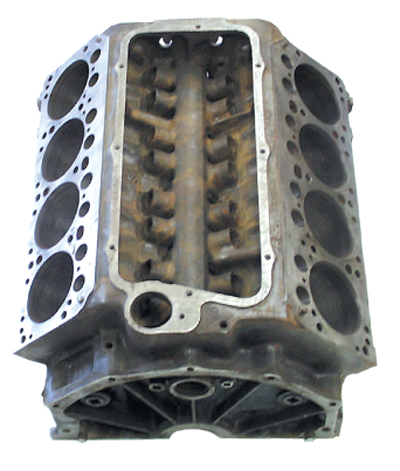
http://www.classichemi.com/392hemi.shtml
http://users.waymark.net/earlyhemi/354/info.htm
later 426 hemi engines had the distributor in front and leaning towards the pass side cylinder head, and a block similar to the 440 wedge engine

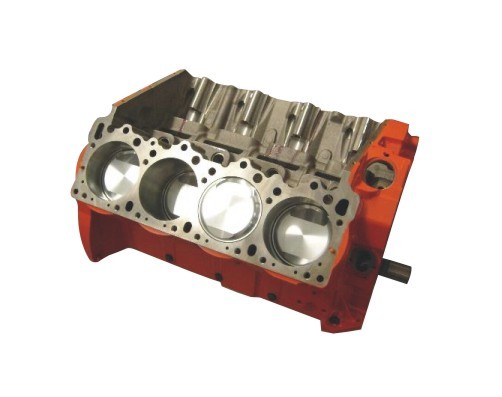
http://www.hotrodsandhemis.com/
http://classichemi.com/392hemi.shtml
http://www.hothemiheads.com/ignition_system/index.html
http://www.powerplayhemi.com/
http://www.hemihaines.com/Hemiphotos.html
http://www.earlyhemiengineparts.com/
http://www.hemihaines.com/Early-Hemi-Engines-6-146.html
http://www.imperialclub.com/Articles/He ... /index.htm
http://www.crankshaftcoalition.com/wiki ... emi_engine
http://www.wilcap.com/Hemi.html
http://www.donovanengineering.com/Blocks/417Block.html
http://www.northernthunder.com/donovan417.html
http://www.hotrod.com/techarticles/hrdp ... o_32.html#
http://www.thehemi.com/forums/viewtopic.php?f=3&t=2851
http://www.moparstyle.net/history/earlyhemimotor.htm
http://www.hothemiheads.com/hemi_info/index.html
my three favorite engines are the big block Chevy and the 392 mopar, and 426 mopar, Ive built enough of each of those to respect and admire their potential, and the 392 mopar is the best design of the three in my opinion, to work on
how can ANY hot rodder not respect the older 392 & 426 hemis



http://www.rodandcustommagazine.com/tip ... index.html
these five engines would be my preferred engine families
early hemis 392 & the later series, 426
BBC 427-572
chrysler 440
pontiac 389-455
ford 385 series (429-460-514-557)
http://www.hotrod.com/how-to/engine/150 ... rly-hemis/
http://www.hothemiheads.com/engine_block/gaskets.html
http://garage.grumpysperformance.com/index.php?threads/1953-chrysler-331-hemi.12532/#post-63455
http://www.hothemiheads.com/hemi_info/hemi_engine_id.html
http://victorylibrary.com/mopar/hemi-c.htm
http://www.hothemiheads.com/cam_shafts_timing/camshafts_new.html
https://www.hotrod.com/articles/build-vintage-392-hemi-cheap-get-436-hp/
https://www.hotrod.com/articles/hrdp-1207-guide-to-early-hemi-engines-part-2/
but you obviously need to know what blocks and heads to use in each type of engine and theres some junk available in each group.


the early hemi 392 was one of my favorite engines its very well designed, these early 392 hemi,s are TOTALLY different engines,from the later 426 hemi most muscle car guys think of when you mention a "HEMI" the fast way to tell the early hemi, is the location of the distributor
early hemi,s had it vertical in the rear of the engine block, and a very distinctive block.
I wish Id saved or not sold off several 392 hemi,s I had when I was younger, but at the time they were very easy to come by from salvage yards, and I also had several 396-427 big block Chevy engines and 389, 400, 421 and 428 Pontiac
be aware THAT many pumps ETC, used industrial EARLY hemi engines of 331-354 displacement
http://www.classichemi.com/index1.shtml


later versions of the 354 and 392 had a removable bell housing design, making them much better suited as car engines

http://www.classichemi.com/392hemi.shtml
http://users.waymark.net/earlyhemi/354/info.htm
later 426 hemi engines had the distributor in front and leaning towards the pass side cylinder head, and a block similar to the 440 wedge engine


http://www.hotrodsandhemis.com/
http://classichemi.com/392hemi.shtml
http://www.hothemiheads.com/ignition_system/index.html
http://www.powerplayhemi.com/
http://www.hemihaines.com/Hemiphotos.html
http://www.earlyhemiengineparts.com/
http://www.hemihaines.com/Early-Hemi-Engines-6-146.html
http://www.imperialclub.com/Articles/He ... /index.htm
http://www.crankshaftcoalition.com/wiki ... emi_engine
http://www.wilcap.com/Hemi.html
http://www.donovanengineering.com/Blocks/417Block.html
http://www.northernthunder.com/donovan417.html
http://www.hotrod.com/techarticles/hrdp ... o_32.html#
http://www.thehemi.com/forums/viewtopic.php?f=3&t=2851
http://www.moparstyle.net/history/earlyhemimotor.htm
http://www.hothemiheads.com/hemi_info/index.html
my three favorite engines are the big block Chevy and the 392 mopar, and 426 mopar, Ive built enough of each of those to respect and admire their potential, and the 392 mopar is the best design of the three in my opinion, to work on
how can ANY hot rodder not respect the older 392 & 426 hemis



http://www.rodandcustommagazine.com/tip ... index.html
Last edited by a moderator:









